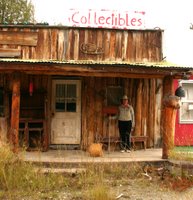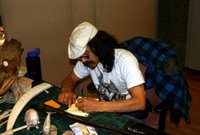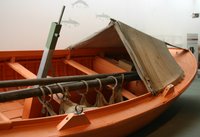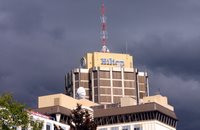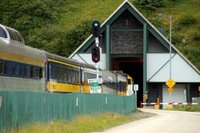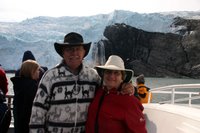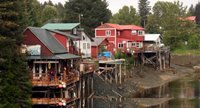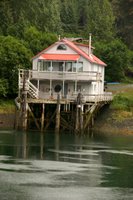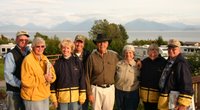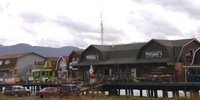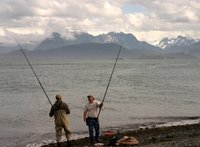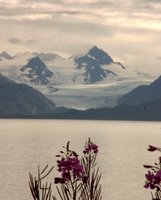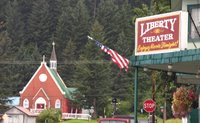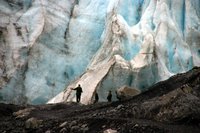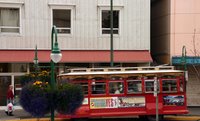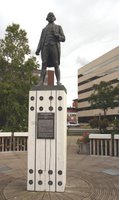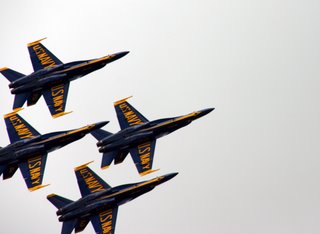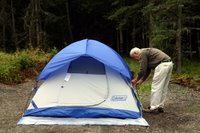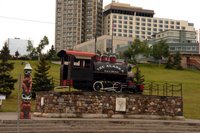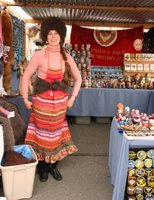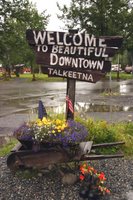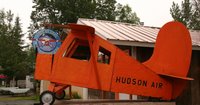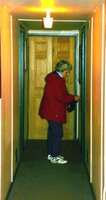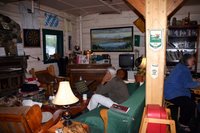Valdez, AK to Whitehorse, YT
Valdez was founded in 1897 as a gateway to the gold fields. Its residents survived a tsunami as a  result of the devastating1964 (9.2) earthquake. The quake caused unstable terrain, so a new town was built four miles west of its original location. It took four years to build the 800 mile Trans-Alaskan pipeline from Prudhoe Bay to Valdez; it was completed in1977. Valdez was devastated by its second disaster in 1989 when the Exxon Valdez oil tanker, with its drunken captain, hit rock and spilled thousands of gallons of oil just outside the harbor. Wildlife was destroyed as was the fishing industry for years, but after a massive cleanup effort, few traces of the spill remain.
result of the devastating1964 (9.2) earthquake. The quake caused unstable terrain, so a new town was built four miles west of its original location. It took four years to build the 800 mile Trans-Alaskan pipeline from Prudhoe Bay to Valdez; it was completed in1977. Valdez was devastated by its second disaster in 1989 when the Exxon Valdez oil tanker, with its drunken captain, hit rock and spilled thousands of gallons of oil just outside the harbor. Wildlife was destroyed as was the fishing industry for years, but after a massive cleanup effort, few traces of the spill remain.
As we left Valdez we drove to Allison Point, past the historic Old Valdez Cemetery, hoping to see an oil tanker filling up from the  pipeline. We got as far as a security gate but were not even allowed to photograph from a distance. On our way back to the main road, we were amazed to see two large black bears catching and eating fish in a spawning area. The bears would take a big bite and throw the fish away. While the wounded fish lay flopping in misery, the bears were yanking out a new catch. What a telephoto opt we enjoyed from a safe distance! Jerry threatened to leave Gloria if she did not get back in the car.
pipeline. We got as far as a security gate but were not even allowed to photograph from a distance. On our way back to the main road, we were amazed to see two large black bears catching and eating fish in a spawning area. The bears would take a big bite and throw the fish away. While the wounded fish lay flopping in misery, the bears were yanking out a new catch. What a telephoto opt we enjoyed from a safe distance! Jerry threatened to leave Gloria if she did not get back in the car.
The drive from Valdez, AK to Whitehorse, YT required a stop in Tok, AK. We camped in our tent as the temp dipped to 28 degrees. Brrrr! In Haines Junction we stayed in the warm, cozy cabin we had rented on our way to Alaska. The scenery along the Alaska Highway was breathtakingly beautiful as the leaves were beginning to turn. Beyond description were the glaciers, wetlands, craggy mountains with snow covered peaks and deep crevasses, and mountains with minerals and vegetation appealing to the Dall Sheep. We counted over 30 of them on Sheep Mountain.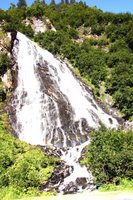
We had shipped 28 pounds of salmon from Jerry’s catch to our home in Virginia, but we kept a couple of fillets for us. We broiled half at the Blessing House for a last night feast. We had kept some of the roe and had them for brea kfast with our eggs the next morning. Along the way south at Snag Junction, we found Small Lake, a perfect place to consume our last fillet. The water was as blue as the sky; the sunshine was profuse, and the fire ring was stocked with dry wood. What a romantic lunch by the fire! We grilled the salmon with red onion slices and added the last of the roe. We were thrilled to have this scenic, secluded, lakeside spot all to ourselves.
kfast with our eggs the next morning. Along the way south at Snag Junction, we found Small Lake, a perfect place to consume our last fillet. The water was as blue as the sky; the sunshine was profuse, and the fire ring was stocked with dry wood. What a romantic lunch by the fire! We grilled the salmon with red onion slices and added the last of the roe. We were thrilled to have this scenic, secluded, lakeside spot all to ourselves.


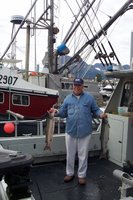

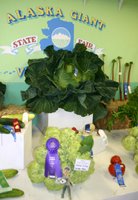
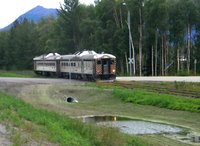 flowerrs and leafy plants were not daunted by the craggy snow covered peaks. We stopped at what must have been Alaska’s original strip mall. It has been abandoned and is only a ghost of its former self, but It is a photographer's dream come true. It has a variety of goods to include rusty Cadillacs, an old hairdryer, a gas pump, Caribou antlers an
flowerrs and leafy plants were not daunted by the craggy snow covered peaks. We stopped at what must have been Alaska’s original strip mall. It has been abandoned and is only a ghost of its former self, but It is a photographer's dream come true. It has a variety of goods to include rusty Cadillacs, an old hairdryer, a gas pump, Caribou antlers an

